Pidcock Architecture + Sustainability

PIDCOCK – Architecture and Sustainability is focused on desirable, sustainable architecture. Our practice aims to excel in ecologically sustainable design, documentation and advice. We aim to demonstrate how the many issues that are integral to such architecture can be potent influences in design and can produce delightful experiences. We respond creatively to the particular issues of each project, especially the client needs and the site environment. PIDCOCK – Architecture and Sustainability is inspired by the possibilities of resolving them in an ecological way.
Driving directions to Pidcock Architecture + Sustainability on map
Pidcock Architecture + Sustainability on Google Maps
Projects:
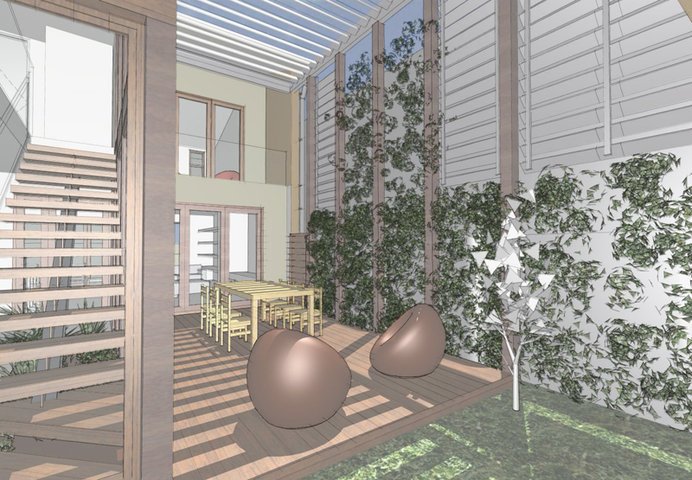
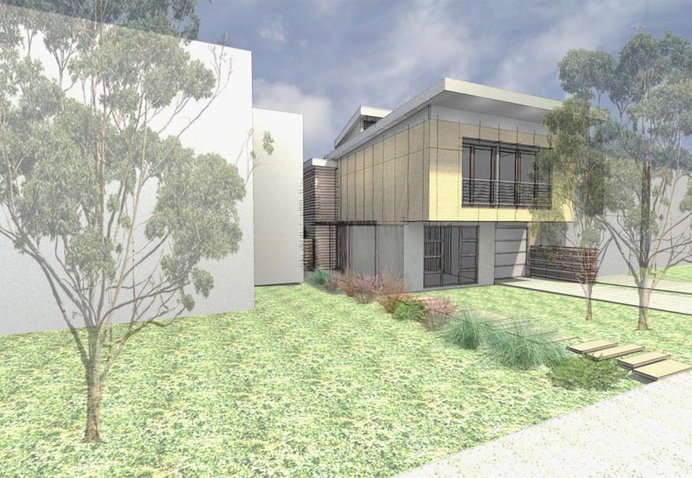
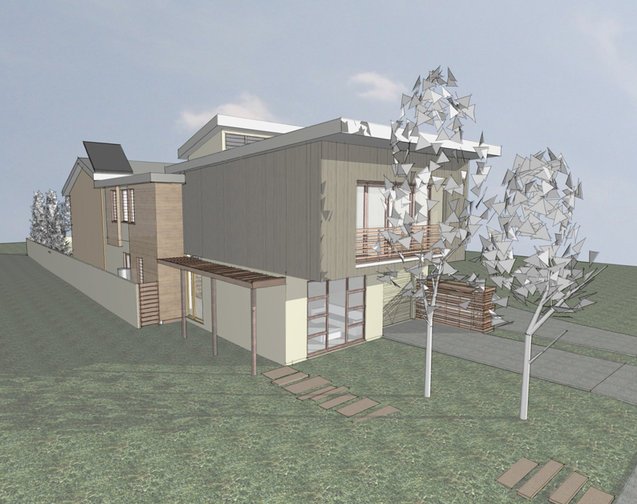
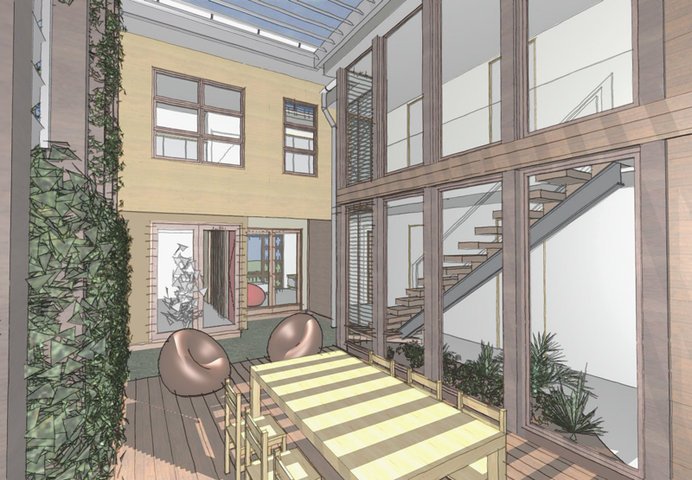
Eco Challenge
Rose Bay, 2010
The challenge was to create a truly sustainable home that appropriately addresses the site and brief, and delivers lessons to assist the wide community of home designers and builders in delivering sustainable outcomes. This was one of four houses that were developed together with this aim in mind. The modest site with north to the street required careful design to enable solar access to the living areas of the home, while ensuring connections with the back garden. The key idea was to locate the front areas of the house and those to the rear on either side of a beautiful, private courtyard. This ensures as many parts of the house as possible can benefit from good solar access, and can easily be connected to the exterior areas of the site. Adjustable shading over and a green wall to the west of the courtyard ensures the environment, privacy and sun is easily managed throughout the year. These living and bedroom areas are extremely well insulated, and able to access appropriate levels of natural light and ventilation through high qualitywindows and doors. The service areas and hallway form a spine to the west, conveniently located together and in a separate “unconditioned” space.
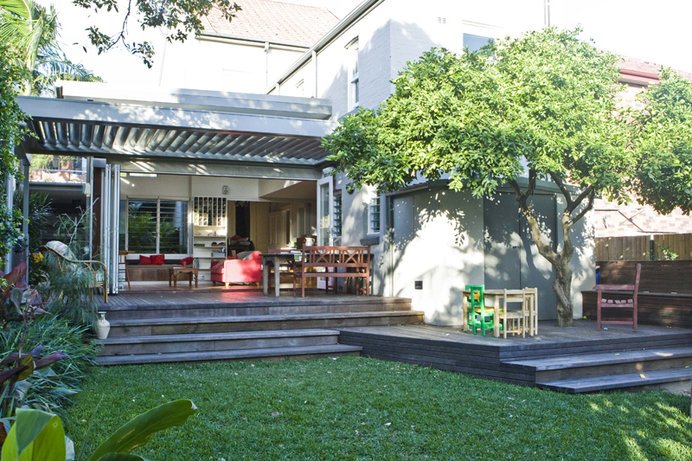
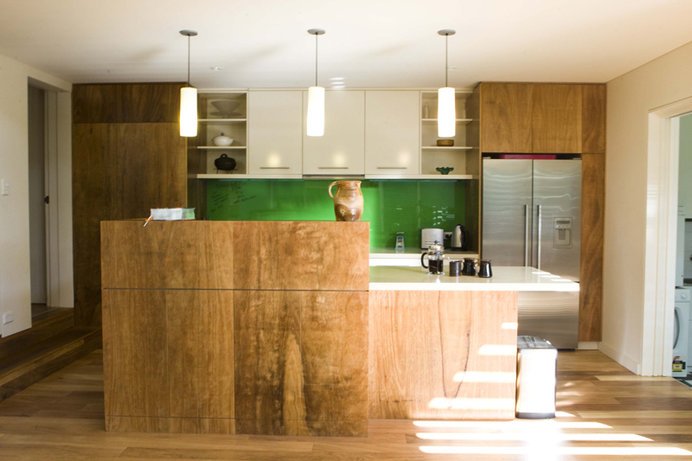
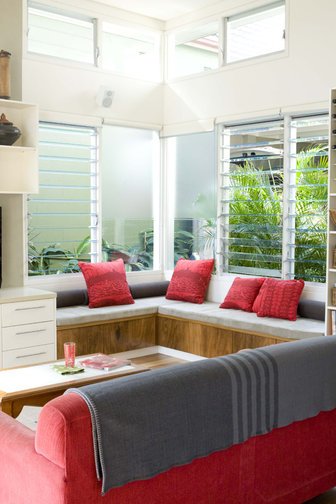
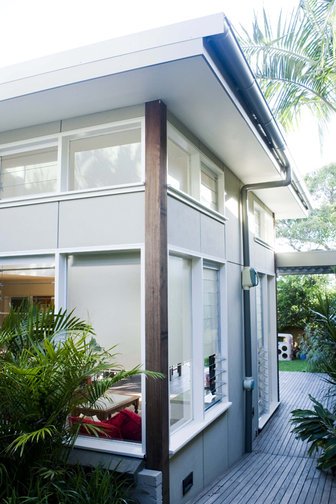
Morrison
Petersham, 2008
The large terrace house sat in the south east corner of a lovely double block, with garden space dropping away to the north and west, nurturing a 100 year old lime tree. The small service rooms (kitchen, laundry and bathroom) to the rear of the main section of house were in original cramped condition and did not connect well to the garden or to the front living rooms. The upstairs bathroom and bedrooms needed attention, as did the structural integrity of the walls. The main part of the brief was to provide a kitchen that worked well as part of larger open plan living spaces, which in turn connected with external decks and the garden. A carport space that could open up and double as covered outside play area was also on the list of must haves. The approach to solving the brief was to extend the kitchen area to the north, enabling it to open east to the existing dining room and west to a new covered deck. This solution now provides a variety of spaces that have different thermal responses for different times of the day and year. The thermal mass of the existing terrace provides a cool place to be in summer, and the new well insulated living room with operable windows and variable shading can be adjusted to suit the climate throughout the year. While opening up the house physically and visually to achieve the brief, we also ensured the rooms could be separated from each other to provide essential thermal and acoustic isolation when required. The new deck with adjustable louvre roof provides a wonderful extension of the living room, allowing a great connection with the garden for much of the year and invaluable protection from the west in summer. The deck has been designed to gently step down through usable spaces to the garden, providing a virtual amphitheatre on the way. The covered carport on the eastern boundary gives valuable off street parking that can easily be converted for use as extra entertaining space when required.


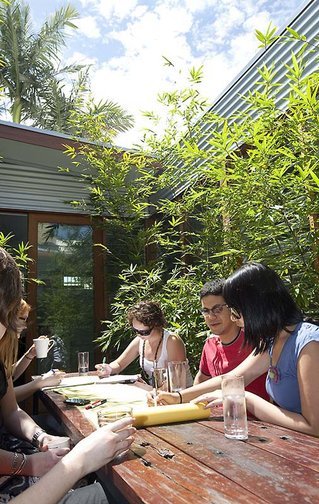

Resource88
Redfern, 2008
The brief for this project was to refurbish an1850’s sandstone cottage and associated buildings into a Centre for Sustainable Practice – a commercial office space to be shared by businesses providing professional services with a focus on sustainable practice. Located in a major urban renewal precinct, this building previously housed a photographic processing laboratory, which relied heavily on artificial light and ventilation. A significant problem with the original building was the complete lack of natural light or ventilation to the majority of the space. As all the external walls are located on the boundaries, the solution was not immediately obvious. Adding to this problem was the poor quality of the building fabric beyond the sandstone cottage at the front and the dark internal colour scheme that made the place feel claustrophobic. This solution was found through the introduction of a new courtyard into the middle of the building and the reinstatement of the side courtyard off the kitchen. The courtyards provide space to enable the building to be lit and naturally ventilated, as well as external areas for the occupants to enjoy. Occupants are continually connected to and aware of the external environment, and operable windows allow individuals to control their own level of thermal comfort. The project embodies and is informed by strong sustainable design principles to enhance its new purpose. These include adaptive reuse of the existing building and materials; inclusion of passive solar design principles where possible including the introduction of natural light and ventilation to the rear section; purchase of certified sustainable products/materials; and inclusion of energy and water efficient appliances, water tanks and photovoltaics. The general design approach was to retain and enhance the simplicity of the existing structure and materials- particularly the sandstone of the original cottage. The new materials, structure and building details have been designed to express and celebrate their inherent qualities and beauty.



